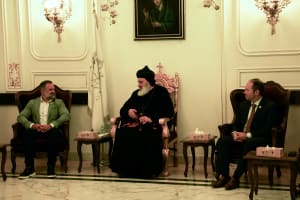7th month of God's year

After sunset on Wednesday (2nd October) we will enter the 7th month of God’s calendar. But first I want to remind you that there are about 40 different calendars in use in the world today. To name a few: Egyptian, Inuit, Coptic, Chinese, Islamic, Syrian, Old Icelandic, and of course the Gregorian, but did you know the Gregorian calendar is very recent? It started in 1582. It replaced the Julian Calendar, which replaced the Roman Calendar. All the above being “made made” calendars. However, only one calendar actually matters, God’s Calendar, and that’s the only one that I am interested in.
So we know from God ‘s Word, when He put lights in the dome of the sky to divide the day from the night, to be signs of seasons, days and years, not, a 24 hour clock, nor a 365 day year, actually not 12 months in a year either, but looking at the sun and moon and signs of the seasons – God’s idea, so it is definitely a very good idea. Also as we know God never named the days of the week, or the months of the year.
During my years of travelling with the Lord I decided many years ago that I am much more interested in what God says, rather than what man says, or even sometimes, what man says about what God says! Whenever my late husband, Michael, used to teach he always said: “Don’t just take my word for this, check it out for yourselves.”
Then my son said to me a few weeks ago that a friend had asked him if had ever had a tattoo. “No”, he replied, “God said not to. (Lev. 19:28) That is why I also don’t eat pork and shellfish either - period.” No discussion needed here. I ask lots of questions now, and God’s Word and historical facts are my main source to check things out.
To sum up a quote from Oswald Chambers: “ Beware of bartering the Word of God for a more suitable conception of your own.”
So bottom line, for me, we are about to enter the 7th month of the Biblical year, God’s calendar, and the first day of this month is NOT Rosh HaShana, period. God very clearly says in Lev. 23 and Numbers 29 that the 1st day of this 7th month is to be observed as a holy day of Yom Teruah which means Day of Shouting/Blowing, also a day of rest.
One of the unique things about Yom Teruah is that the Torah does not say what the purpose of this appointed time is, though it is seen as a “Wake Up Call” as we enter what we call The 10 Days of Awe, before Yom Kippur. We have at least one, and sometimes more reasons for the other appointed times.
The verb form of Teruah often refers to the noise made by a gathering of the faithful calling out to The Lord. Lev. 23 also refers to this 1st day of the 7th month as Zichron Teruah, a memorial, a remembering.
Sadly few people today welcome this first day of the 7th month just as Yom Teruah, as it is now so widely known and called Rosh HaShanah, head of the year, even to the point that this is when the counting of the year changes. From what I have found out this transformation of Yom Teruah into Rosh HaShana began through pagan Babylonian influence during the exile. Even though the Children of Israel were continually warned by God not to be influenced by the ‘nations’ and ‘their ways’ it has sadly been one of their weaknesses throughout all generations.
The first stage was the adoption of Babylonian names for the months, then some of these names found their way into the later books of the Tanach, but always appear alongside the God given number of the month, as in 1Kings: 8:2 “All the men of Israel assembled before King Shlomo at the festival in the month of Etanim, the seventh month.” This month later being re-named Tishri.
So many of God’s people became more comfortable with the Babylonian month names, and sadly also other Babylonian influence, including the idea of two new years. Even after the exile ended in the year 516 before Yeshua many of the exiled remained in Babylon, and this is where rabbinical Judaism gradually took shape. Hillel 1 was born and educated in Babylon.
There are many theories as to why and when the “Civil Year” or “Tishri-year” was adopted, which was equivalent to, the Ancient Macedonian calendar used by the Hellenistic empires (332-30 BCE), however, by the period of the Mishnah, at the beginning of the second century, the outlines of today’s Rosh Hashanah holiday are clear; and discussions about the prayers of Rosh Hashanah appear in the teachings of the schools of Hillel and Shammai, which date to the first century CE.
Later in the 4th century after Yeshua, Hillel II established a fixed calendar based on mathematical and astronomical calculations. This calendar which is still in use today, standardises the length of months and the addition of months over the course of a 19 year cycle, so the lunar calendar realigns with the solar year.
When asked by somebody what The Jews did before Hillel II worked all that out in the 4th century I replied, well let’s see, they had God’s Word, the sun, the moon and the natural rhythm of the seasons.
The Bible does not directly mention the addition of “leap months". The insertion of an extra month is based on the requirement that Passover occur at the same time of year as the spring barley harvest (aviv - meaning Spring). Observe the month of Aviv, and keep Pesach…Deut. 16:1. (My understanding was not that God was calling the 1st month Aviv, but it was indicating the month of Spring.
The confusion for some seems to come with references in the scriptures to the end of year, as in Ex. 23: 16 “at the end of the year, when you gather in from the fields the results of your efforts.” And also from last week’s Torah Portion Veyelekh, when Moshe reminds the children of Israel saying “ At the end of every 7 years during the festival of Sukkot in the year of sh’mittah…(Deut. 31:10)…But it is clear to me that references to the end of the year and gathering in the harvest is talking about the “agricultural year”. Obviously the shmitah year is all about the land resting, so it is also obvious that the shmitah year would begin AFTER the final harvest at the end of the summer, so when we have references at the end of your year in relation to harvest and shmitah it is NOT talking about the end of the calendar year, and not therefore changing the 7th month to become the 1st month of the year. For me God’s word stands forever. Period.
So this 7th month of the God’s year is probably the busiest month of the year, we have a total of 13 special days, 7 of which are Shabbats. This includes the holidays known as the High Holy Days, Yom Teruah, which is actually a two-day festival observed on the 1st and 2nd days of this 7th month, and serves as the first of the Aseret Yemai Teshuvah, which means the ten days of repentance, and preparing for Yom Kippur, the Day of Atonement on 10th of the 7th month, and this leading to the third and final Pilgrim Feast of Succot, beginning on the 15th day of the 7th month. The first two, as you know, being Pesach and Shavuot,
Then comes Hoshana Rabbah, the final day of Succot, and then Simchat Torah, marking the conclusion of the annual cycle or Torah reading. A month of chageem, and seen as a month of great blessing, the 7th month, a number of completion.
The 10 days of Awe, Yameem Noreem are seen as a time given to get ourselves right with God, and right with one another, as we prepare for Yom Kippur, where God commanded: “Deny yourselves, do not do any kind of work, both the citizen and foreigner living with you. On this day atonement will be made for you, to purify you…..” Levit. 16: 30.
During temple times there was one place considered so holy that it was only ever entered on this one day of the year, and then only by the high priest. The Holy of Holies, beyond the veil in the Temple, where the Ark of the Covenant was kept. Yom Kippur was the one day of the year when a sacrifice was made for the sins of the entire community of Israel.
Lev. 16 explains all that the High Priest had to do on this day, culminating in making two sacrifices, one of a bull for himself and his family and one of a goat, on behalf of all Israel. BUT there were two goats, one to be killed and one to be released. So the High priest would get what was called the Urim and Thummim two stones which were put in a silk bag, one was a white stone on which was written L’Adonai (To God) for the goat that was killed, and the other was a black stone, written on it L’Azazel. עז means goat אוזל means escape, this goat was sent off into the wilderness to carry the sins away.
Interestingly On the 2nd day of Yom Teruah the Akedah is read (the story of the binding of Isaac) remembering there were two sons, Ishmael and Yitzhak, one chosen to be killed the other cast out into the wilderness….and of course we have a prophetic picture of Yeshua when Abraham sees a ram caught by its horns in the thicket, a lamb with a crown of thorns killed in place of Yitzhak.
Many years later we were given another visual picture in the year Yeshua died at Pesach, giving us a strong connection to the sacrifice for Yom Kippur. Two men Yeshua, Son of God, and Barabbas (son of the father).
As written in Matthew 27:17. We read Pilate asked the people TO CHOOSE, which man to sacrifice, to kill, and which one to release, to set free. Which one got the white stone L’Adonai and which one the black L’Azazel. This has certainly helped me make that important connection between Yeshua dying for the sins of the world, and the Sacrifice at Yom Kippur. We need to remember that the Passover Lamb sacrifice was NOT in fact a sacrifice for sin, its blood daubed on the lintels of the houses at the first Pesach was just to protect just the firstborn from the angel of death.
The other connection, of course, is the moment Yeshua gave his life, as recorded in Matthew 27, he cried out in a loud voice and gave up his spirit, as that very moment the parokhet, which was the 35 ft high, very heavy veil, embroidered with gold and silver thread, and precious stones, which separated off the Holy of Holies, was ripped in two from Top to bottom. The moment the lamb died for our sin, the ultimate and final sacrifice for the sin of the world, God opened up the most Holy of Holy places to everyone.
I haven’t got time to go into all the different prayers said on Yom Kippur, but they beautiful, and I find them most helpful.
The final prayer is called N’ilah, and is the only time in the year when the doors to the Aron HaKodesh, where the scrolls are kept, remain open, signifying the gates of Heaven being open. Then the final act is the blowing of the shofar, one very very long single blast
Five days later we are commanded in Lev. 23 to begin the 7 day Feast of Succot, Tabernacles. We build temporary shelters, to remind ourselves of the 40 years we lived in temporary shelters before being brought into The Land of Promise, we take choice fruit, palm fronds, thick branches and river willows and wave them before the Lord, it’s a Feast, it is a celebration.
So let’s have a quick recap of these days ahead of us now. Yom Teruah, when we have lots of shouting and shofar blowing to cry out to God and to confuse Satan, followed by the 10 day of Awe, leading us to Yom Kippur, putting ourselves right with The Lord and one another, ending with one very long blast of the shofar, bringing us to Succot.
I am sure most believers think that this is the most likely time Yeshua will return, we get the sound of the shofar to alert us, a time of repentance, and then Yeshua coming to dwell, to tabernacle with us, Emmanuel, God with us. And I believe it is most likely that Yeshua was born at Succot, so in my Succah I read all the prophecies and fulfillments about his birth. Chag Emanuel. Succot the ONLY festival where it is commanded to Rejoice Before the Lord.
In Zechariah we read “ after all the wars, and plagues …Sof Sof, Finally all those remaining from the nations that came to attack Yerushalayim will go up every year to worship the King, Adonai Tzva’ot and to keep the festival of Succot, Tabernacles. This is not just the evangelical Christians coming to the International Christian Embassy Conference, this is all those who survive from the nations coming up, not to some Conference centre but to Jerusalem, God’s Holy appointed place, to Worship the King, Adonai Tzavot. Jews and Gentiles as one.
Then the 8th day of Succot, Hashana Rabah,The Great Hosanah. The great Salvation. In temple times a very important ceremony took place on this day called the Nisuch HaMayim, or the water libation.
In the middle of the night the Cohanim would collect a silver pitcher from the altar that was only for this purpose and with great ceremony would march from the Temple Mount down into the city of David to the pool of Siloam. The people would line the path of this great parade, bearing torches and singing and dancing and playing musical instruments. The Cohanim would fill the pitcher with water from the pool. And then singing and dancing they paraded back up through the city of David, to the altar in the Temple. In one corner of the altar, a silver cup was placed and the designated Cohen would then, in front of the massive crowd, pour the water from the pitcher into the silver cup, with great rejoicing, singing and dancing of the crowds that had gathered in the Temple courtyard.
This was the most joyous day of the year. This water libation ceremony was the backdrop to the famous scene in John 7:37 when Yeshua stood and cried in a loud voice. Well, he would have had to cry in a loud voice as there was a lot of noise going on, and said: “If anyone is thirsty, let him come to me and drink. Whoever puts his trust in me, as the scripture says, rivers of living water will flow from his inmost being” I am sure this is a reference to Isaiah 55:1 “All you who are thirsty come to the water, you without money, come …”
This 8th day is also called Shemini Atzeret and is a two-day festival in the Diaspora and a one-day holiday here in Israel. The only ritual that is unique to Shemini Atzeret is the prayer for rain (tefilat geshem).
This celebration is then followed by Simchat Torah, rejoicing in the Law, and the scrolls are turned back ready for the cycle of Torah readings to begin again. But THIS IS NOT A BIBLICAL COMMAND. Something that again has happened over the years to coincide with this NEW YEAR which man created.
I haven’t even had time to cover all the 31 times this 7th month is mentioned in the Scriptures.
I mentioned in my previous blog that it is traditional to say Psalm 27 each day during this time of PREPARATION, Here are the last two verses: “I remain confident of this: I will see the goodness of the Lord in the land of the living, Wait for the Lord; be strong and take heart, and Wait for the Lord.”
As the nation of Israel prepares to remember and mourn again the events of 7th October last year (Simcha Tora on 22nd of this 7th month) which will fall on 24th October in the Gregorian calendar this year, may we decide again to put our trust in the God of Avraham, Yitzhak, and Yacov, and receive this new portion of time, a gift from Him, and be alert, watching and praying and prepared for His return. Looking to Yeshua for His Living Waters, and praying for the Lord’s grace and favour on this dry and thirsty land, both physically and spiritually.
Open the floodgates of Heaven Abba we pray. And make us mindful of Your Word, Your Ways, and not be distracted and led astray by the ways of the world.
יהי רצון מלפנין יהוה אלהינו ואלהי אבותינו שתחדש עלינו חודש טוב
באדנינו ישוע המשיח
May it be Your will Lord our G-d and G-d of our fathers, that You renew for us a good month in our Lord Yeshua the Messiah.

Fran has lived in Israel since 1999 and resides in Ma'ale Adumim, outside of Jerusalem. She serves on the board for two Israeli non-profits, Be'ad Chaim and HaTikva Project.














